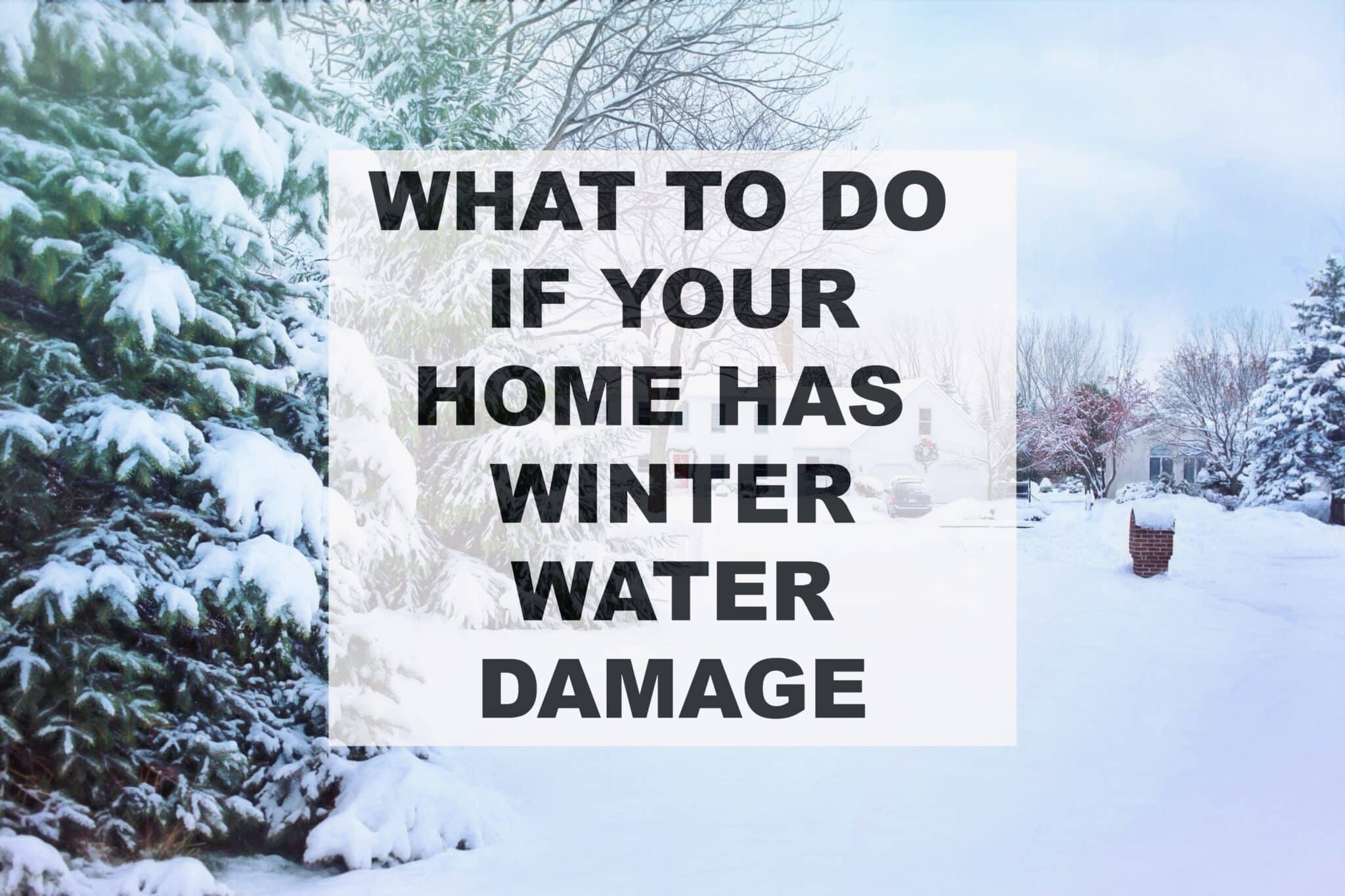
Water damage to your home can happen quickly and unexpectedly by flooding, a burst pipe, melting ice, ice dams, a leaky roof, etc. When it happens, home water damage clean up can be a challenge, if not outright overwhelming. But the sooner you act, the sooner you can limit the damage to your home. Contact your insurance agent first, and then contact a professional water damage restoration expert like Octagon Cleaning & Restoration. Octagon Cleaning & Restoration is certified by the IICRC (Institute of Inspection Cleaning and Restoration), the institution that sets the standards and certifications for the inspection, cleaning, restoration and installation industries. These are the standards that insurance companies adhere to.
After you’ve contacted the insurance company and before the cleanup service arrives, there are several steps you can take right away to clean up the water damage to your home. Here are answers to a few common questions you may have before you begin to tackle any water damage cleanup in your home.
How do I clean up water damage?
Cleaning up water damage is a multi-step process that is usually best left for the professionals but first determine the situation. Is there standing water or is there still water free flowing?
- If water is still flowing: If the water is still flowing, you will want to act fast. If its a job for a plumber (ie. a pipe burst), you will want to get emergency services to triage the source of water flow. Once the source of water has stopped and the water is standing, you can move on to the next step.
- Dealing with standing water: Safety is the first concern before removing standing water (like in a basement). One of the biggest concerns is dealing with electricity. Be sure the power is shut off before entering a room if there is still water on the floor. If there are gas lines into the home, be sure to smell for gas and check for damage. If the water has stopped flowing and is standing, then it will need to be extracted before a company will be able to begin clean up and restoration. In this case, you can call emergency flood water extraction services or look into buying a pump to remove the water yourself depending on the severity of the situation. It’s important to note that you should only start to remove standing water if it is ankle deep. If the room has more water let the water damage remediation team do the work. You risk damaging the building’s foundation if large amounts of water are removed too quickly.
- What you can do: Make a list of the damage and take photos or videos for the insurance adjuster.
How to begin the cleanup from water damage?
When you, or the insurance agency, call a cleaning and restoration company like Octagon, we follow a simple process. We send a water certified technician to access the site’s damage and create an action plan. The technician will also check the environment for mold as that will change the course of action.
- What you can do: If the damage is minor, wear protective clothing, rubber boots, and rubber gloves. Disinfect and clean all hard surfaces, dishes and like items with soap and hot water. Wipe down wooden items like chairs and tables and bring them outside, weather permitting, or to a room in the house that was not damaged, to dry out. Take area rugs from the room and spread them outside to dry.
- What the professionals will do: They will begin on their action plan immediately. Part of this process is drying the damage and wet areas. Depending on whether mold is present or not, an active or passive drying process will begin. If there isn’t any mold, the team will employ an active drying system which uses air movers and dehumidifiers to help dry the affected area. If there is mold, then the passive drying system will be used instead. The difference here is to not disturb the mold that is present; therefore, not using fans that will blow the air around the space.
How do you fix water damage?
There are companies that do this quickly and professionally and will be able to easily assess the loss. After the environment has been stabilized and the space has been completely dried out and disinfected, the area in and around the water damage will have to be replaced. Carpets and hardwood flooring will have to be removed, as well as the underlying padding, to get to the base flooring. If drywall has swelled, warped or is sagging, then the entire sheet will have to be replaced. Once the drywall is removed, the insulation will be checked for signs of damage, too.
Be wary of mold!
One of the most important factors in hiring a professional water damage restoration company is for mold remediation. After water damage, the prevention of mold growth is the top priority to keep you and your family healthy, and to preserve the structural integrity of your house. The trouble with mold is it can not only grow and spread on your walls, carpets, and flooring, but it can grow in them, as well. The result is poor indoor air quality which can lead to long-term respiratory related problems and illnesses.
When You Need Commercial or Home Water Damage Clean Up Experts
While its possible for you to attempt water damage clean up on your own, we don’t recommend it. There are many dangers that factor into the process. If your home or business has water damage and you suspect that damp conditions within your building have led to the formation of mold, don’t hesitate to contact the experts Octagon Cleaning & Restoration. We can be reached 24/7 at (207) 893-0002 in Maine, and (603) 239-2100 in New Hampshire.
